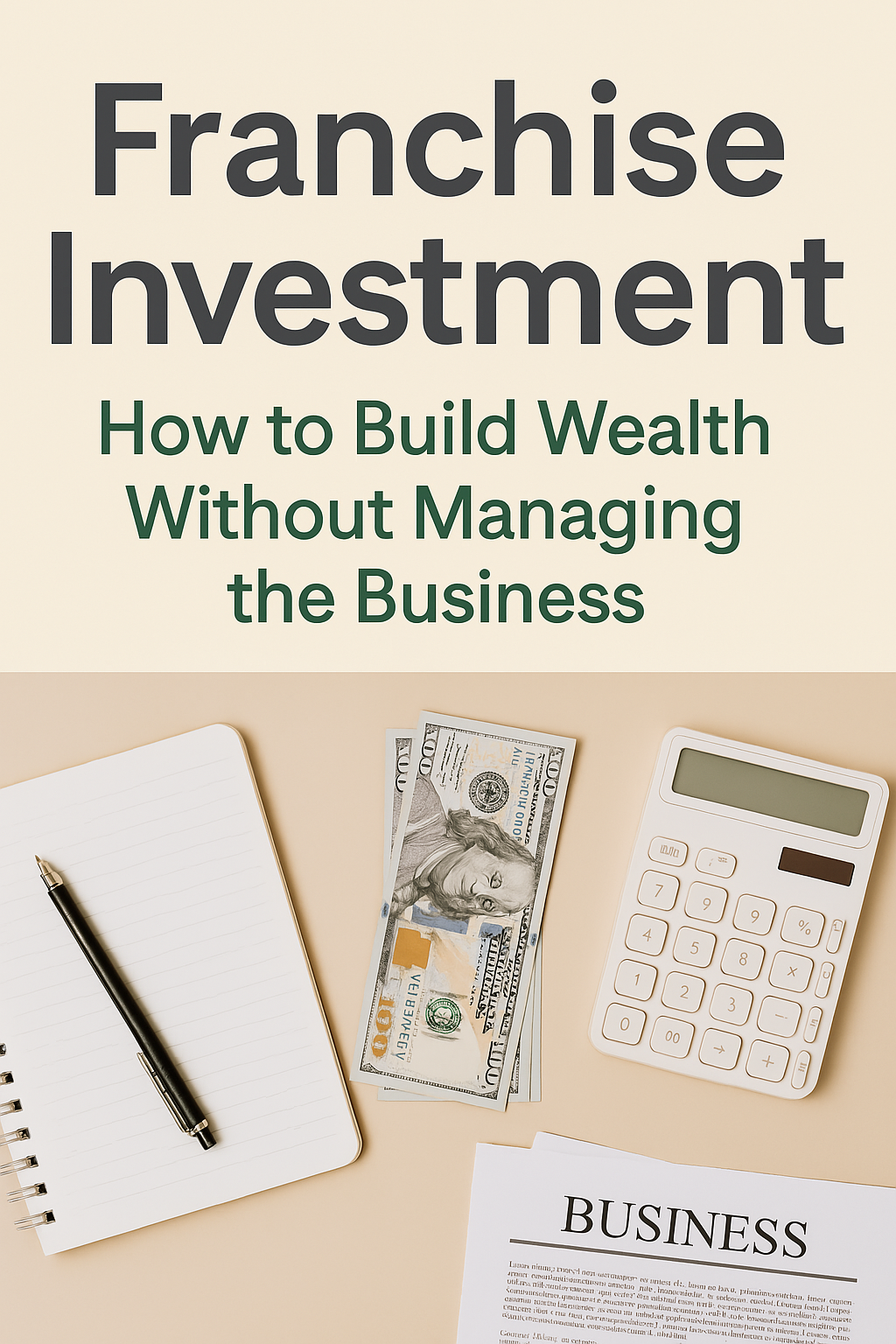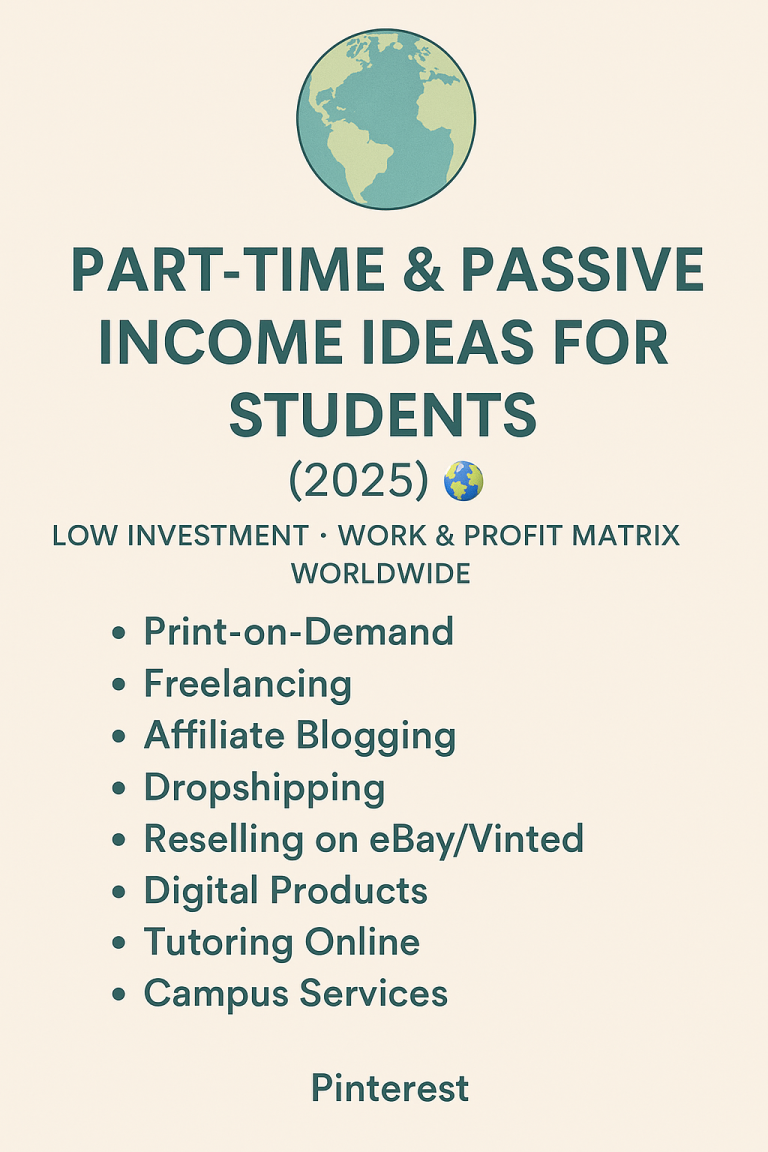In today’s fast-paced world, the dream of earning steady, hands-off income is more desirable than ever. One of the most lucrative paths to achieve this is franchise investment without active management. If you’ve ever wished to own a business but not run it day-to-day, this guide is for you.
In this comprehensive article, we’ll cover:
- What franchise investment is
- How to invest passively
- Best franchises to consider
- Setup and operating costs
- Profit expectations after expenses
- Legal and management considerations
💡 What is Franchise Investment?
Franchising is when a company (the franchisor) allows individuals (franchisees) to run their business using its branding, products, and operational model. As an investor, you can fund the setup and ongoing costs of a franchise, and let a hired team or a management company handle the day-to-day operations.
This is called a semi-absentee or absentee franchise model, ideal for people who:
- Have a full-time job
- Don’t want to manage employees
- Prefer regular passive income
- Have capital to invest but not time
🧠 How to Invest Without Managing
You don’t need to be an expert or physically present in the business. Here’s how it works:
1. Choose an Absentee-Friendly Franchise
Many franchises allow investors to hire general managers and outsource operations. Examples include:
- Laundromats
- Vending machines
- Fitness centers
- ATM networks
- Fast food chains
- Car washes
- Senior care services
2. Hire a General Manager (GM)
You’ll pay a salary to a qualified GM to run operations, hire staff, and report performance. This is the backbone of your passive franchise model.
3. Use a Franchise Management Company
Some investors go a step further and hire third-party franchise operators who handle everything—including hiring GMs, marketing, and reporting. You just get a monthly summary and bank deposit.
🔎 Top 5 Franchise Options for Passive Investors (2025)
| Franchise Name | Industry | Initial Investment | Avg. Monthly Profit (after expenses) |
|---|---|---|---|
| The UPS Store | Courier & Printing | $150,000–$250,000 | $4,000–$6,000 |
| Planet Fitness | Fitness | $1M–$4M | $8,000–$15,000 |
| Cruise Planners | Travel Agency | $3,000–$10,000 | $1,500–$3,500 |
| Zoomin Groomin | Pet Grooming | $75,000–$120,000 | $2,500–$5,000 |
| Matco Tools | Mobile Tools | $100,000–$150,000 | $4,000–$7,000 |
✅ All of these allow absentee or semi-absentee ownership!
📊 Investment & Expense Breakdown: Real-World Example
Let’s take an average mid-tier investment:
Laundromat Franchise
💵 Initial Setup:
- Franchise Fee: $30,000
- Lease/Renovation: $70,000
- Equipment: $100,000
- Licenses & Permits: $5,000
- Working Capital: $10,000
- Total Investment: ~$215,000
💸 Monthly Expenses:
- Staff Salaries: $3,500 (including GM)
- Utilities: $1,500
- Maintenance & Supplies: $800
- Franchise Royalty: $700
- Insurance & Taxes: $1,000
- Total Monthly Cost: ~$7,500
📈 Monthly Income:
- Gross Revenue: $15,000
- Profit After Expenses: $7,500/month
That’s $90,000 per year passive income on a $215K investment — a 42% ROI annually!
🧾 Legal, Tax, and Ownership Considerations
✔️ Ownership Setup:
Form an LLC or Corporation to own the franchise. This protects your personal assets.
✔️ Management Contracts:
Have clear employment contracts for managers or signed agreements with third-party operators to define duties, incentives, and expectations.
✔️ Franchise Agreement:
Read this document carefully. It outlines:
- Territory rights
- Royalties
- Advertising fees
- Support and training provided
✔️ Taxes:
Franchise profits are typically taxed as business income, but with an LLC, you can take advantage of pass-through taxation. Hire an accountant familiar with passive businesses.
📈 Expected ROI and Time to Break Even
| Investment Tier | Setup Cost | Monthly Profit (Avg) | Break-Even Time | ROI (Annual) |
|---|---|---|---|---|
| Entry (under $50K) | $10K–$50K | $500–$2,000 | 2–3 years | 15%–30% |
| Mid-Tier ($50K–$250K) | $75K–$250K | $2,500–$8,000 | 1.5–2.5 years | 30%–50% |
| Premium ($250K+) | $250K–$2M | $10K–$30K | 2–4 years | 15%–25% |
📌 Best Practices for Passive Franchise Ownership
- Interview Multiple Franchises – Compare support, costs, and success rates.
- Talk to Existing Owners – Ask about real-world performance and management ease.
- Don’t Underpay GMs – A good manager = peace of mind and higher profits.
- Monitor Monthly Reports – Stay informed without getting involved daily.
- Invest in One, Then Scale – Once one is running smoothly, reinvest profits into a second franchise.
🧠 Final Thoughts: Is It Really Passive?
No investment is 100% hands-off, but franchise investment with the right systems, people, and structure can come very close. Think of it as being the owner of a machine that runs on its own — you just fuel it initially and service it occasionally.
🚀 Ready to Get Started?
You don’t need to quit your job or become a business guru to make a franchise work for you. You just need a plan, capital, and reliable people.
With the right franchise, you can build a long-term income stream, scale your wealth, and finally enjoy the kind of freedom where your money works for you—not the other way around.
Estimated reading time: 8–9 min
Word count: ~1200 words




